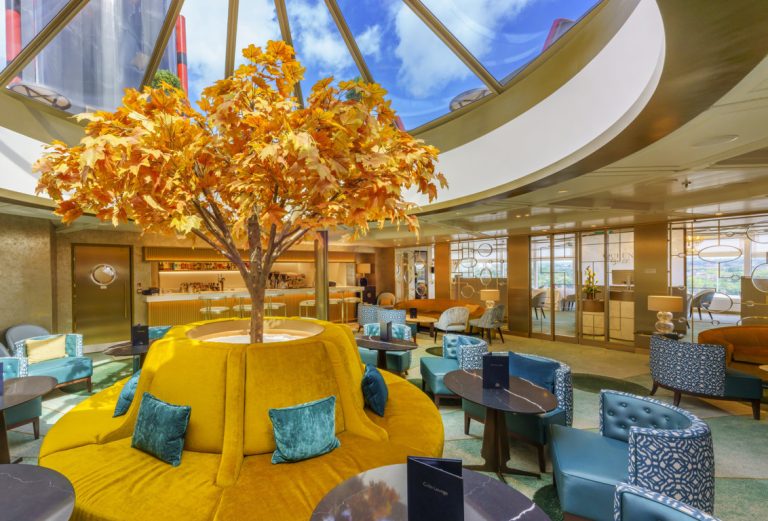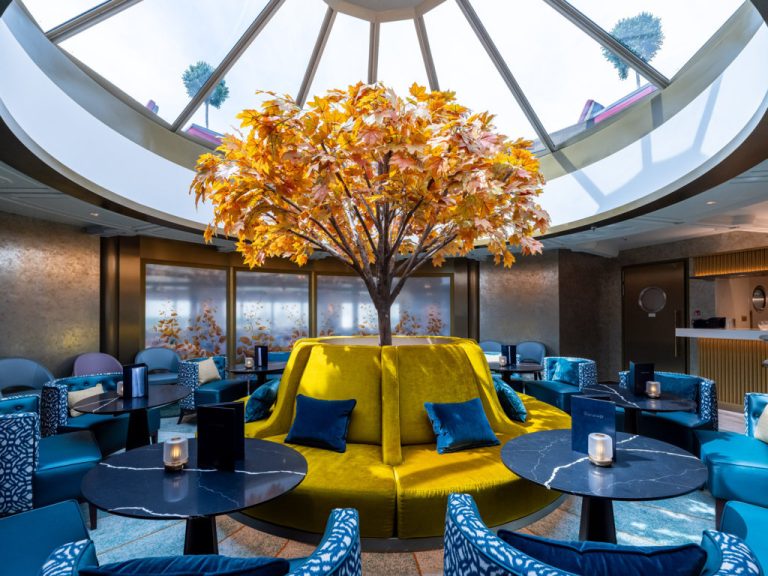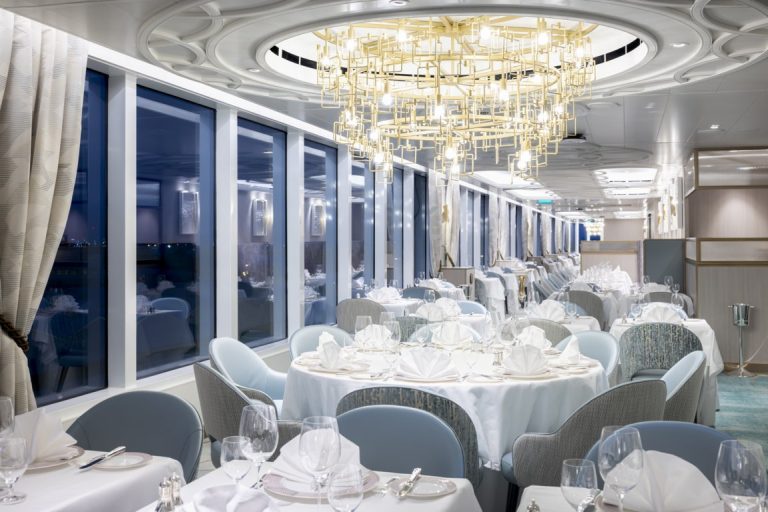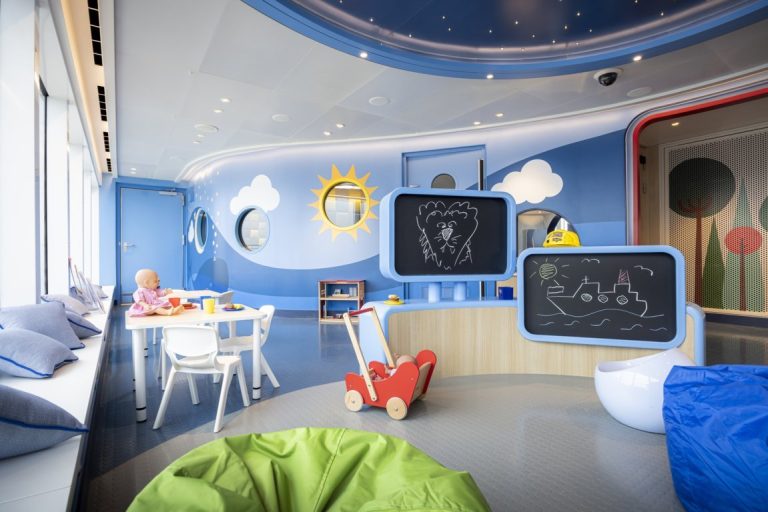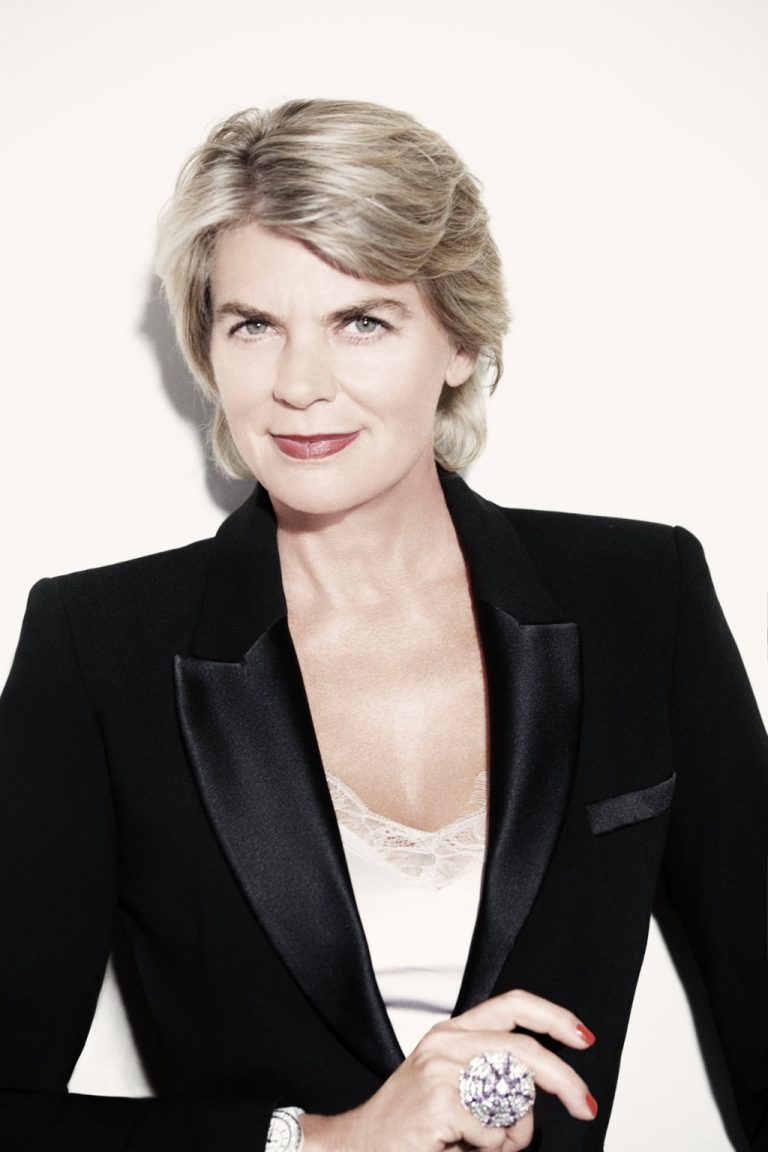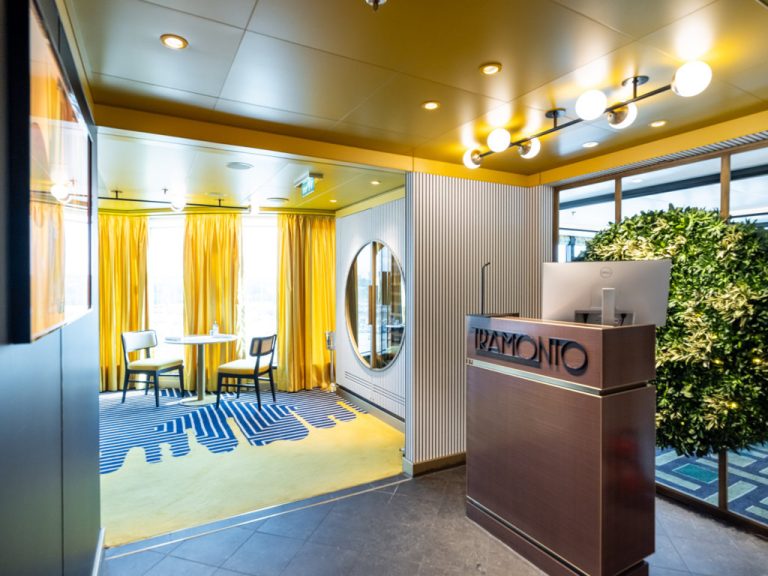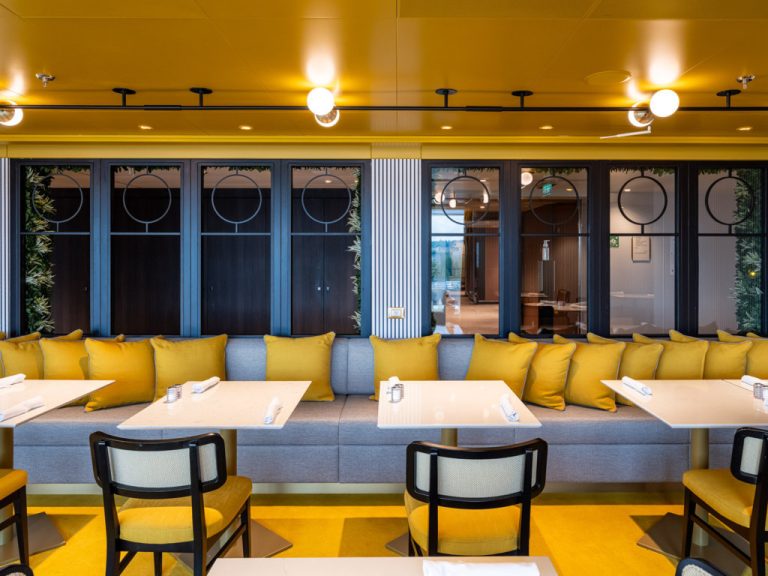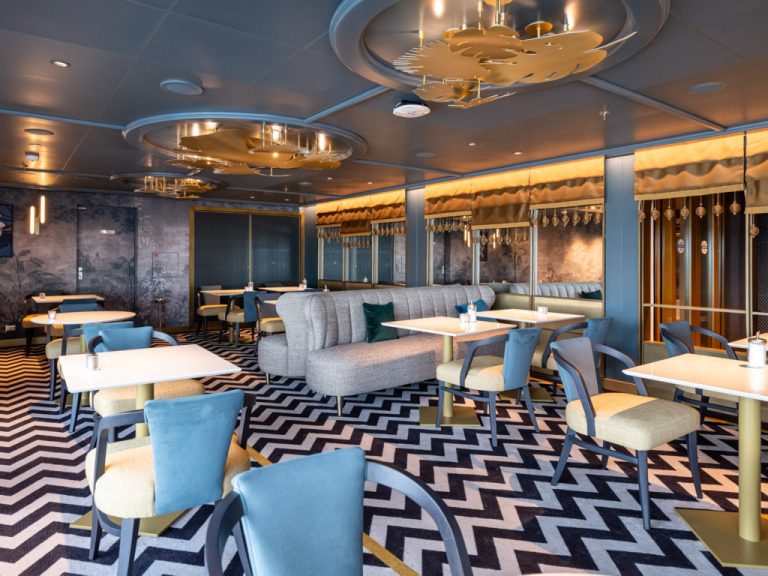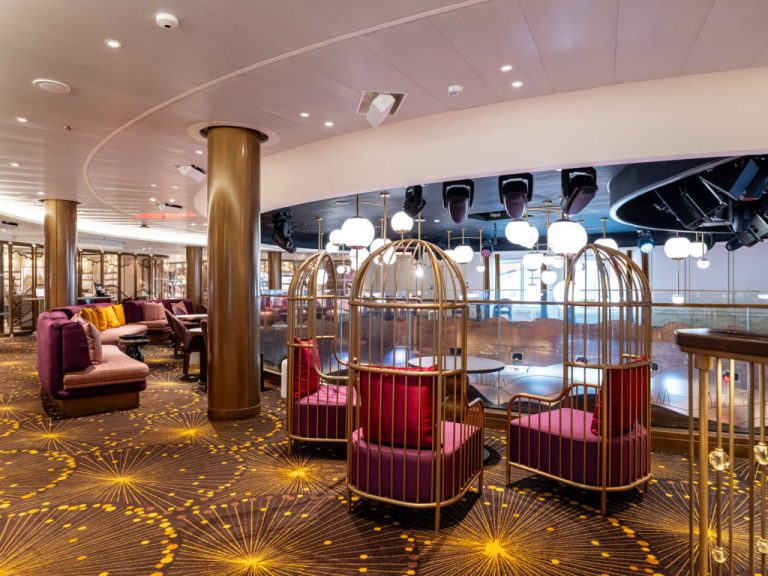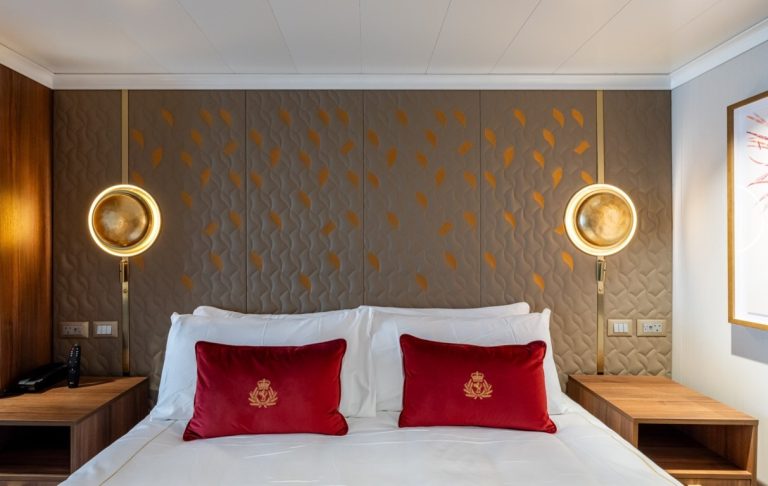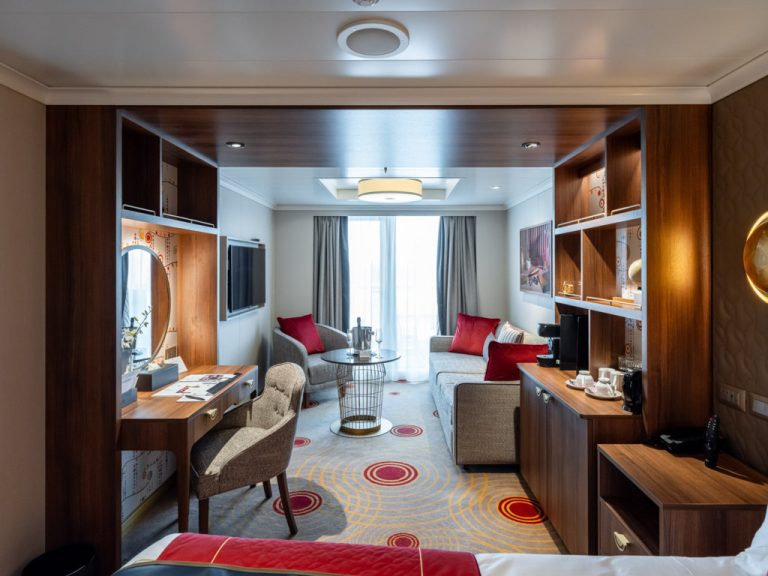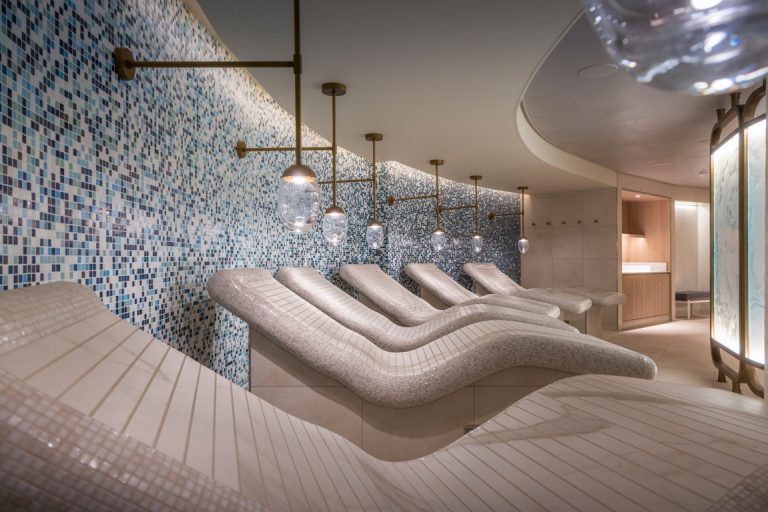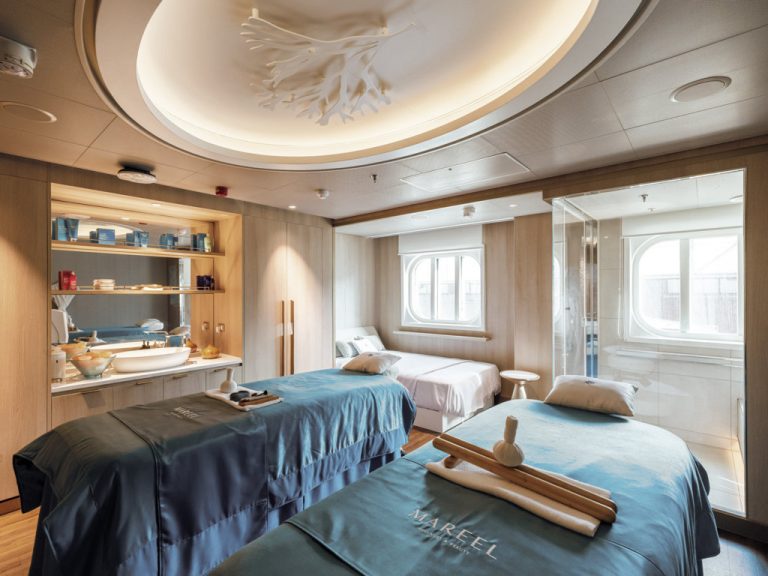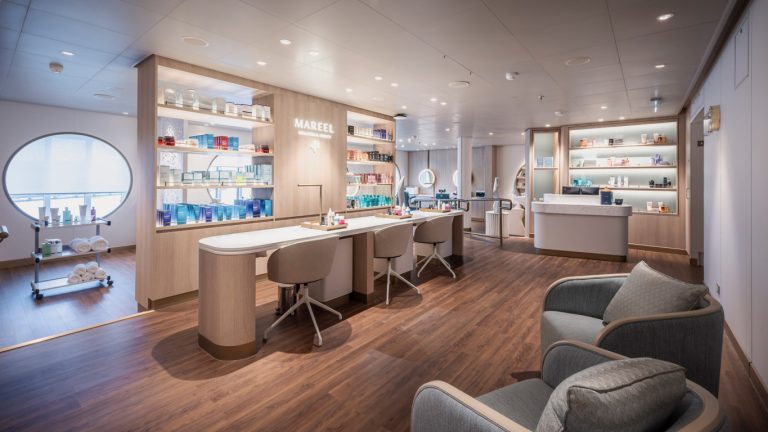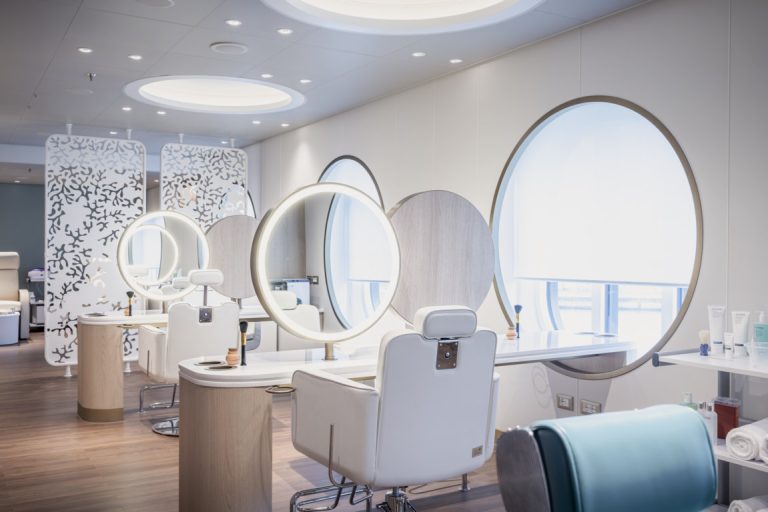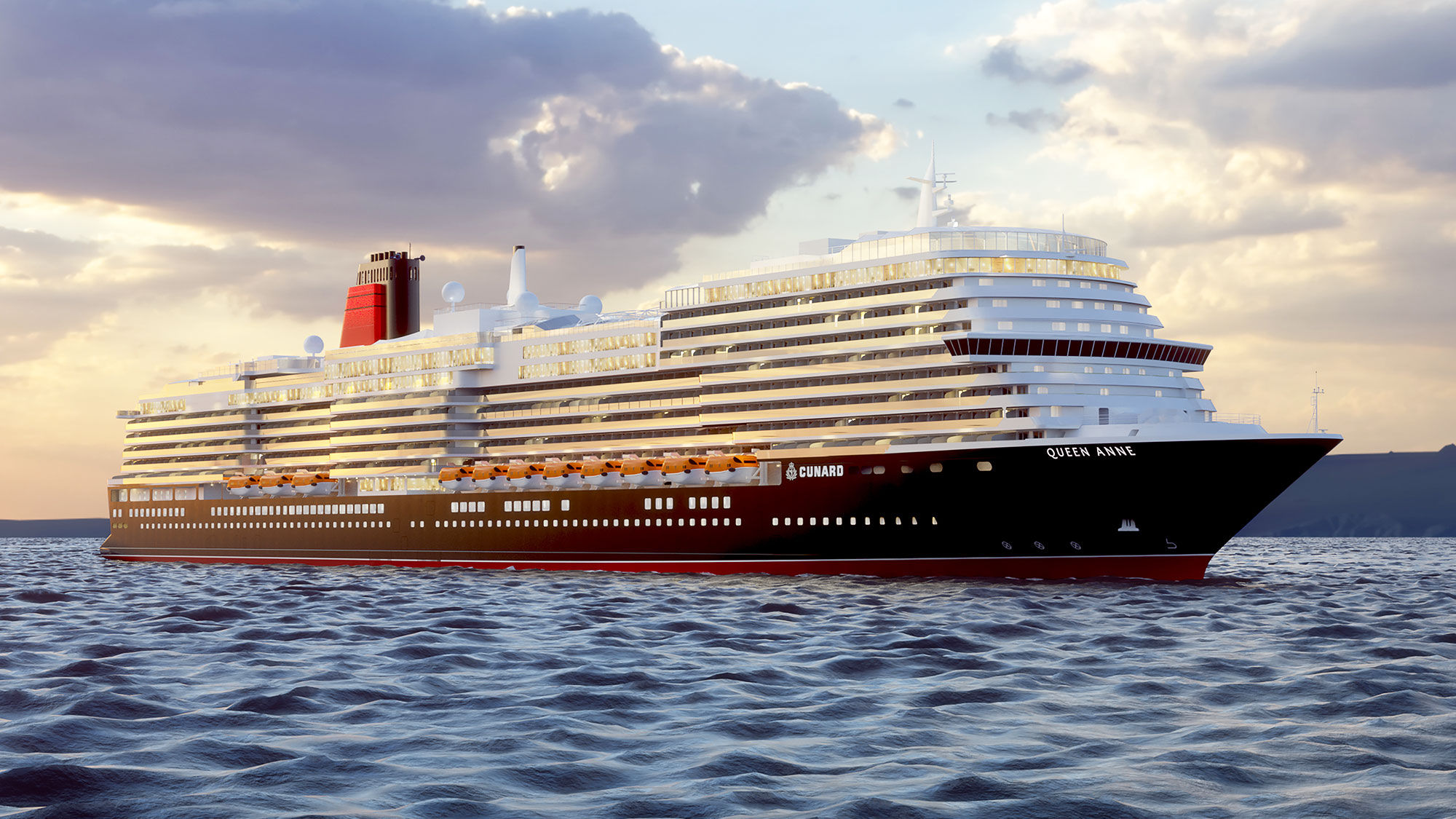Sybille de Margerie: Designing Elegance at Sea
Over the years, we have had the pleasure and privilege of speaking with some of the most influential figures in the cruise industry. They have shared with us in detail their roles and objectives in ensuring the smooth operation of all the complementary activities that make up this intricate cruise machine. It is a vast mosaic, composed of a diverse range of responsibilities and professionals—each different, yet equally essential to the progress and functioning of this business.
We have spoken with women leading cruise lines, onboard crew members, and those who sell the final product, among many others. Recently, however, we had the opportunity to explore a particularly fascinating topic—one that revolves around one of the key elements of cruising: shipbuilding, and more specifically, the design and outfitting of interiors.
We had the pleasure of meeting Sybille de Margerie, a renowned architect specializing in luxury interiors, based in Paris. Sybille contributed to the design of certain areas aboard Cunard Line’s Queen Anne and was therefore closely involved in the thrilling process that marks the very beginning of it all—the conception and construction of a new ship. We wanted to understand her approach, her expertise, and uncover anecdotes and details about the work carried out for this magnificent new Cunard vessel.
Grills Lounge
Grills Lounge
SDM – Queen’s 05
SDM -Kids Club 1
Sybille, first of all, thank you for your time and for welcoming us into your studio to share more about your work—especial ly in relation to shipbuilding and cruise lines. To start, could you give us a brief introduction to your background? Tell us about your studies, what led you to luxury design, and how you came to establish your own design studio in Paris?
My family owned several Palaces in Paris among which were Hotel de Crillon and hotel Lutetia. Since my childhood I’ve been familiar with this special environment of refinement. Luxury is part of my DNA.
I studied architecture and interior design at the École Boule in Paris, where I developed a passion for creating spaces that evoke emotion and tell a story. My journey into luxury design came naturally through early collaborations with prestigious hospitality brands, which allowed me to explore a refined, detail-oriented approach. In 1989, I founded my own design studio in Paris with the ambition to combine traditional French elegance with con temporary influences, creating bespoke interiors that reflect the identity and aspirations of each project.
Sybille De Margerie CEO
Before your experience with Cunard, what were your most successful projects, or the ones that best represented your style and vision of luxury design?
Some of my most defining projects include The Mandarin Oriental in Paris, where I designed the interiors for its rooms, suites, spa and public areas, blending Parisian chic with understated luxury. Another key project was The Cheval Blanc Courchevel, where I worked to create a warm yet sophisticated alpine treat, combining craftsmanship and contemporary aesthetics. I have also designed luxury private residences around the world, always striving to achieve harmony between comfort, elegance, and individuality.
Was Cunard your first experience working on cruise ships? How did your collaboration begin? Did you find it challenging to work within such a complex environment as a shipyard building vessels of this scale? I imagine it requires an incredible level of coordination with other companies and designers, making it a truly unique way of working.
Yes, working with Cunard on the Queen Anne was my first experience in shipbuilding, and it was truly a fascinating journey. The collaboration began through a mutual connection in the luxury design world, and I was immediately drawn to the challenge of working in such a unique environment. Designing for a ship requires a completely different mindset—technical constraints, rigorous safety standards, and the coordination with multiple teams at the shipyard. It was an exciting and enriching experience that pushed me to adapt my creative process.
SDM- Restaurant Tramonto 4
SDM- Restaurant Tramonto 4
SDM- Retail 6
SDM- Special restaurant 1
Let’s get into the details of the Queen Anne project. What spaces did you design? How many and which design studios were involved in the project, and how was it decided which areas would be assigned to you versus others?
For the Queen Anne, my studio was responsible for designing several key public spaces, including Queen’s room, Queen’s grill and lounge specialty restaurant, retail spaces, spa and private areas reserved for premium guests. It was a collaborative project involving multiple renowned design studios, each bringing their own expertise. The allocation of spaces was carefully curated to ensure coherence while allowing each designer to express their creativity within the overall vision of the ship. My focus was on creating elegant, intimate spaces that would evoke a sense of timeless luxury, blending Cunard’s heritage with a modern twist.
Did you receive specific guidelines from the client regarding the style to follow while planning your designs? Did this feel limiting compared to having complete creative freedom, as you might in a traditional project that doesn’t need to align with an established legacy—such as the prestigious and historic Cunard Line?
Yes, we received clear creative guidelines from Adam Tihany, who served as the artistic director for the Queen Anne project. His vision was essential in defining the overall aesthetic and ensuring that each designer’s contribution remained cohesive within the ship’s narrative. Adam wanted the design to reflect Cunard’s rich history while also embracing a modern luxury that feels both timeless and fresh.
3 key words: Britishness, Storytelling, craftsmanship.
Each space had to embody a certain elegance—rooted in Brit ish heritage, yet interpreted with contemporary sophistication. There was a strong emphasis on warmth and comfort, blending traditional craftsmanship with innovative materials and details that would speak to today’s luxury travelers.
Rather than being restrictive, these guidelines served as an inspiring foundation. Adam’s vision gave us a clear artistic direction while allowing each studio to express its unique creativity. It was about elevating the experience of luxury through thoughtful design, ensuring that every space felt intimate, welcoming, and un mistakably Cunard.
This collaboration required a balance between individual expression and collective harmony, something that Adam Tihany orchestrated brilliantly. His role was crucial in maintaining a consistent and refined identity throughout the ship, ensuring that the Queen Anne offers a coherent and luxurious experience from bow to stern.
SDM-Queen’s Room 03
SDM-Retail 5
How did working on a cruise ship impact or transform your design approach? What are the main differences compared to other projects, such as your work on The Mandarin Oriental Paris?
Working on a cruise ship was a completely different experience. The scale and mobility of the space mean that every design element must be meticulously planned and tested for durability and functionality. Unlike a static hotel project, ship design requires a stronger focus on modularity, lightweight materials, and resistance to environmental factors like salt and humidity. The constraints were challenging but also forced me to think outside the box and find innovative solutions without compromising on aesthetics.
An inevitable question: have you ever traveled on a cruise? What is your relationship with this type of tourism? In other words, did you manage to put yourself in the shoes of a cruiser while designing spaces that would soon become an integral part of their onboard experience?
I had never taken a cruise before working with Cunard, but I made it a point to immerse myself in the experience during the design process. The kick-off was held in Queen Victoria so I had discovered how guests move through the spaces, how they relax, socialize, or seek solitude. Designing for a cruise is about creating a journey within a journey—a seamless experience where every detail contributes to the overall sense of well-being and discovery.
I believe Cunard must pay particular attention to the interior spaces of its ships, as it is a brand with a long-standing tradition of elegance and a fascinating history of ocean travel. I don’t like to generalize, but perhaps guests aboard Cunard’s Queens tend to be more attentive to details and the refinement of certain elements. They love spending time on board, which gives them more opportunities to appreciate the nuances of the design. Did you sense this? Was it conveyed by the client, or did you feel free to create based on your experience and creative vision?
Absolutely. Cunard’s attention to detail and dedication to elegance were present in every discussion. Their team had a deep understanding of the importance of design and how it enhances the passenger experience. I felt fortunate to work with such an engaged client, and while there were clear expectations, I was given the freedom to propose my own creative interpretations, always aligning with their vision of timeless sophistication.
SDM-Princess Grill cabin 01
SDM-Princess Grill cabin 01
Now that Queen Anne is sailing and offering guests an elegant and captivating cruise experience, how do you think the project aligns with the current luxury travel market? Would you say it is an innovative project that introduced new trends in cruise design, or rather a preservation of tradition—albeit with cutting-edge materials?
The Queen Anne is a perfect blend of tradition and modernity. While it respects Cunard’s prestigious legacy, it also introduces new materials, contemporary touches, and a more relaxed luxury that reflects the evolving expectations of today’s travelers. It’s not about breaking with the past but rather enhancing it, ensuring that each space feels relevant and inviting while remaining rooted in Cunard’s storied history.
Ships are among the industries most focused on sustainability and environmental protection. This philosophy drives mechanical design, from propulsion to emissions, and extends to crucial collaborations with ports and local communities. Is this commitment strongly reflected in interior design as well? I’m referring specifically to material selection, sourcing, and overall sustainability considerations.
Sustainability is a growing priority in luxury design, and this project was no exception. We focused on sourcing eco-friendly materials and working with suppliers who prioritize responsible practices. Durability and environmental impact were key considerations, especially in material selection and fabrication processes. Creating beautiful, long-lasting spaces is the most sustainable approach we can take.
SDM-SPA 3
SDM-SPA 4
SDM-SPA 3
SDM-SPA 6
Are you currently working on any new projects with cruise lines? Do you see this sector becoming a more significant part of your work, or would you prefer to maintain the current balance of your projects? If you were to return “on board” for a new design, what kind of spaces would you love to work on?
I am always open to new opportunities in the cruise industry. While my work remains diverse—spanning hospitality, residential, and commercial projects—I find the world of ship design incredibly stimulating. If I were to return, I would love to design a spa and wellness space, creating a serene, multi-sensory experience for passengers. Another area of interest would be private suites, reimagining them to offer an even greater level of comfort and exclusivity.
I believe a ship’s interiors play a defining role in shaping its identity and are fundamental to the branding that sets a cruise line apart. They are a key distinguishing feature that goes beyond mere aesthetics and functional design. Undoubtedly, your work on Queen Anne has brought great visibility to your studio, and I am certain we will see more elegant spaces designed by you in the future.
Thank you so much for your time and for giving us a closer look at your work for Cunard Line. Wishing you continued success!
Don’t miss more updates, news and reviews about the world of cruises on Cruising Journal.

